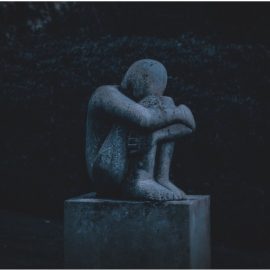

This article is an excerpt from the Shortform book guide to "An Unquiet Mind" by Kay Redfield Jamison. Shortform has the world's best summaries and analyses of books you should be reading.
Like this article? Sign up for a free trial here .
What are manic phase symptoms in bipolar disorder? How did these manic state symptoms appear in An Unquiet Mind?
In her memoir An Unquiet Mind, Dr. Jamison recounts her experience living with manic depression. Her manic phase symptoms began in her senior year of high school and didn’t end until late adulthood when she was prescribed lithium therapy.
Read more to learn how manic phase symptoms manifest in everyday life.
The Emotional Roller Coaster of Bipolar Disorder
Bipolar disorder (also known as manic depression) is a two-sided illness. On one side of the coin are episodes of enlightenment, unparalleled creativity, and endless energy.
However, these manic state symptoms are transitory; the other side of the coin involves distorted thinking, a loss of rationale, and a desperate desire to end your suffering, often through suicide.
Dr. Jamison: Manic Phase Symptoms
Manic state symptoms can vary from person to person in both duration and intensity. In Dr. Jamison’s case, her manic episodes burned bright and hot for a brief period fizzling into depression.
In high school, her manic periods brought an intense ability to focus and be productive. But added to those aspects was a tendency toward excess. Once, for example, she purchased 20 books from the university bookstore after walking through the botanical gardens. The small stream running through it reminded her of a poem by Lord Tennyson. The other purchased books only marginally related to the book of poems, but in her mind, they were interconnected. Something about their cumulative meaning represented some deeper truth of the universe. She was positive she could crack it. These types of expenditures were damaging to her bank account as much as to her psyche. She was working near full-time at a clothing store to afford tuition, and the lost money consistently translated into late tuition payments. Of course, she always received the late notices when she was coming down from the high.
Another time, Jamison went on a massive shopping spree. Excessive spending is one of the bipolar disorder manic state symptoms, but Jamison didn’t think of it this way. Within her first two major manic periods, she spent around $30,000 on everything from multiple Rolexes to taxidermied animals. Unfortunately, the repercussions of her actions usually hit right around the time her mania slipped into depression.
As regular as a ticking clock, her depression hit with almost the same force as the mania. She couldn’t muster any desire for school, work, friends, exploring, or daydreaming. Each day brought the horrible realization that she would have to get through it. She thought about dropping out of school. Her classwork stopped making sense, and suicide seemed like the only option to end the pain of wandering alone in her dark fog.

———End of Preview———
Like what you just read? Read the rest of the world's best book summary and analysis of Kay Redfield Jamison's "An Unquiet Mind" at Shortform .
Here's what you'll find in our full An Unquiet Mind summary :
- How Kay Redfield Jamison first experienced a manic episode at the age of 17
- How her illness made Jamison buy taxidermied animals and multiple Rolexes
- Why Jamison believes there are positives to her manic episodes






